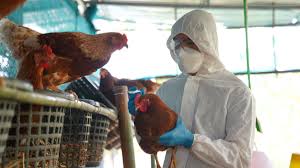Second Human Case Confirmed in US: Avian Flu Alarm Grows
Texas health authorities announced on Monday that a resident contracted avian influenza, commonly known as bird flu, through close contact with infected cows, marking the second human case reported in the United States. Last week, the US Department of Agriculture disclosed avian flu outbreaks in dairy herds across five states: Idaho, Kansas, Michigan, New Mexico, and Texas.
Understanding Bird Flu:
Bird flu viruses, categorized under Type A, primarily originate in wild aquatic birds like ducks and geese before transmitting to domesticated poultry such as chickens. The current focus is on Type A H5N1, initially detected in 1959, which has undergone evolutionary changes, resulting in newer strains.
Symptoms and Risks:
Symptoms of bird flu resemble those of other flu strains, including coughing, body aches, and fever. While some cases may be asymptomatic, severe pneumonia can occur, posing life-threatening risks. Although H5N1 doesn’t readily transmit between humans, mutations could lead to pandemic risks, warranting vigilance among health authorities.
Expert Insights and Precautions:
Dr. Mandy Cohen, director of the CDC, stressed the seriousness of the situation, particularly with the virus detected in cattle. Precautions are urged for farmworkers handling cattle, alongside those working with birds. While not a new strain, the CDC has been monitoring and preparing for avian flu for decades.
Statewide Impact:
Cattle herds in several states, including Michigan, Idaho, New Mexico, Kansas, and Texas, have reported avian flu cases, highlighting the widespread nature of the outbreak.
Transmission and Vaccine Development:
Avian flu primarily spreads through contact with infected birds, with most human cases linked to exposure to sick or dead animals. Vaccine manufacturers remain vigilant, ready to develop vaccines if needed, to combat potential outbreaks.



